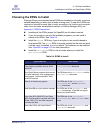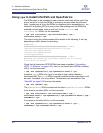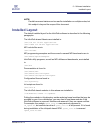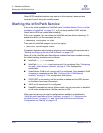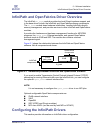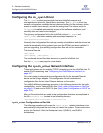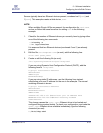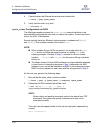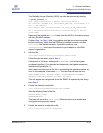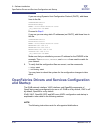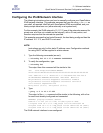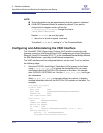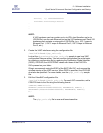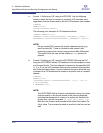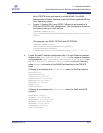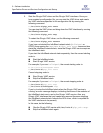
5 – Software Installation
Configuring the InfiniPath Drivers
IB0056101-00 G 5-15
A
The Globally Unique IDentifer (GUID) can also be returned by running:
# ipath_control -i
$Id: QLogic Release2.2 $ $Date: 2007-09-05-04:16 $
00: Version: ChipABI 2.0, InfiniPath_QHT7140, InfiniPath1 3.2,
PCI 2, SW Compat 2
00: Status: 0xe1 Initted Present IB_link_up IB_configured
00: LID=0x30 MLID=0x0 GUID=00:11:75:00:00:04:e0:11 Serial:
1236070407
Removing the middle two 00:00 octets from the GUID in the above output
will form the MAC address.
If either Step 1 or Step 2 fails, the problem must be found and corrected
before continuing. Verify that the RPMs are installed correctly, and that
infinipath has started correctly. If problems continue, run
ipathbug-helper and report the results to your reseller or InfiniPath
support organization.
3. Edit the file:
/etc/udev/rules.d/30-net_persistent_names.rules
If this file does not exist, skip to Step 4.
Check each of the lines, starting with
SUBSYSTEM=, to find the highest
numbered interface. (For standard motherboards, the highest numbered
interface will typically be 1.)
Add a new line at the end of the file, incrementing the interface number by
one. In this example, it becomes
eth2. The new line will look like this:
SUBSYSTEM=="net", ACTION=="add", SYSFS{address}=="$MAC",
IMPORT="/lib/udev/rename_netiface %k eth2"
This will appear as a single line in the file. $MAC is replaced by the string
from Step 2.
4. Create the network module file:
/etc/sysconfig/hardware/hwcfg-eth-id-$MAC
Add the following lines to the file:
MODULE=ipath_ether
STARTMODE=auto
This step will cause the ipath_ether Ethernet driver to be loaded and
configured during system startup.
5. Create the network configuration file:
/etc/sysconfig/network/ifcfg-eth2



